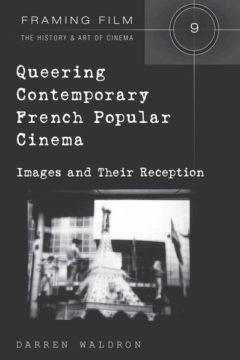combines close film analysis with a small-scale qualitative investigation of audience responses to examine images of queerness in contemporary French popular cinema and their reception. Through its blending of the textual and the empirical, this book provides a unique insight into the ways in which sexuality and gender are represented on the cinema screen, as well as the spectator reactions they elicit. Since the mid-1990s, depictions of lesbians, gay men, and queer forms of sexual desire and identity have shifted to the mainstream of French cinematographic representation – as evidenced by the box-office success of a series of highly commercial comic films, including (Josiane Balasko, 1995), (Gabriel Aghion, 1996), (Francis Véber, 2000), and (Merzak Allouache, 2003). Alongside this commercial strand, a series of small-budget alternative comedies and other genre films have also challenged heteronormative conceptualizations of sexuality and gender. Films such as (François Ozon, 1998), (Jean-Jacques Zilbermann, 1997), (Stéphane Giusti, 1999), (Olivier Ducastel and Jacques Martineau, 2000), and (Christophe Honoré, 2007) portray desire as fluid and/or gender as unfixed. With their use of parody and their blending of comedy with the musical, melodrama, romance or road movie, these and other similar films have resonated with a burgeoning viewing public, tired of having to seek queerness in connotation, of appropriating marginal characters in ostensibly straight narratives, and of tragedy and trauma as the principal modes of representation and spectator address.
- Veröffentlicht am Montag 12. Oktober 2009 von Peter Lang Publishing Inc. New York
- ISBN: 9781433107078
- 305 Seiten
- Genre: Film, Fotografie, Hardcover, Kunst, Softcover, TV, Video
